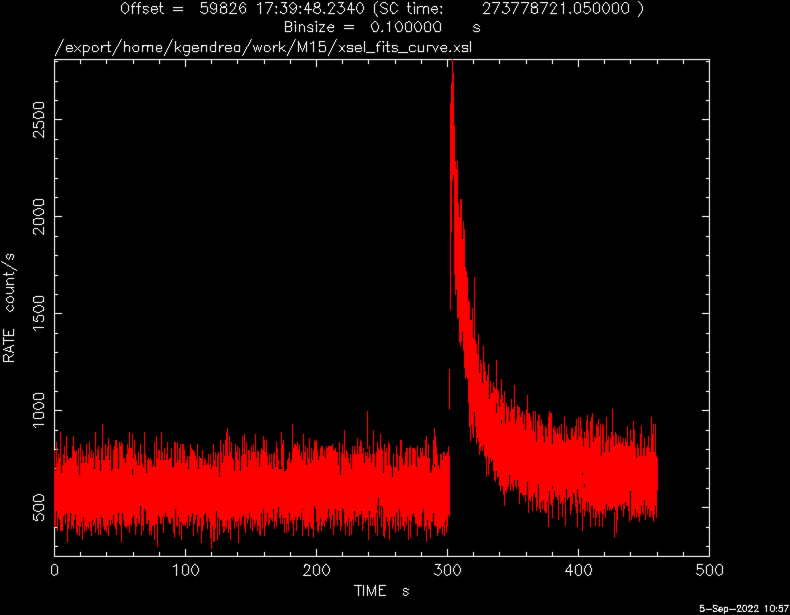NICER / ISS Science Nugget
for September 8, 2022
Neutron Star Outburst in a Globular Cluster
Messier 15 (M15) is one of our Galaxy's globular clusters, a gravitationally bound collection of some 100,000 stars nearly 36,000 light-years from Earth. The very high density of stars in the core of a globular cluster gives rise to frequent gravitational interactions as the stars swarm around one another, with the result that clusters host an overabundance of exotic binary and triple star systems. As a population, stars within globular clusters are also among the oldest, relative to the rest of the Milky Way, so that endpoints of stellar evolution - such as neutron stars and black holes - are common. Thus, globular clusters are frequently X-ray-bright, as neutron stars and black holes crop up in binary systems with "normal" companion stars, drawing matter from them into hot accretion disks during episodic outbursts.
On the 3rd of September, JAXA's MAXI payload on ISS alerted the community to X-ray brightening from the direction of M15. NICER and NASA's Swift observatory began observations to determine the origin of the outburst. Three X-ray binaries in this cluster, likely harboring neutron stars, were already known: AC 211, which has a 17-hr orbital period, M15 X-2, and M15 X-3. The first two lie deep in the cluster's core, while X-3 is somewhat offset (by 20 arc-seconds on the sky). Images obtained by Swift's X-ray telescope were able to rule out M15 X-3 as the source of the outburst, but could not discriminate between AC 211 and M15 X-2. In the meantime, NICER data revealed Type I X-ray burst: the glowing fireball of a thermonuclear explosion on the surface of a neutron star that has accumulated a critical density of light-element fuel from its companion star. AC 211 is not historically known to emit Type I bursts, and further NICER monitoring has so far shown no indication of a 17-hr periodicity in M15's X-ray emission, so X-2 is likely responsible for the current outburst. High-resolution X-ray images obtained by NASA's Chandra telescope should definitively resolve this question.
Early NICER results for M15 were reported this week in Astronomer's Telegram #15593, led by MIT graduate student Mason Ng.

Figure:
The rate of X-ray photon detections as a function of time in a NICER observation of globular cluster Messier 15 reveals a Type I X-ray burst, in which X-ray brightness quadruples in less than one second and then slowly decays back to the pre-burst level over tens of seconds.
<< Previous
Main Index
Next >>